France is home to 4 million suckler cows, made up of 2 million Charolais, 1 million Limousin and another 1 million being made up of Blonde d’Aquitaine, Aubrac, Parthenaise and other breeds.
The French suckler industry is being met with the same challenges as the Irish suckler industry. Tight margins, a greater focus on the environment and issues attracting young people into the sector has meant suckler numbers have been in decline for the last number of years. However, 2022 has been a good year for prices. Beef price has been at €5.20-€5.60/kg for much of 2022, up from a price of €3.80/kg in 2021.
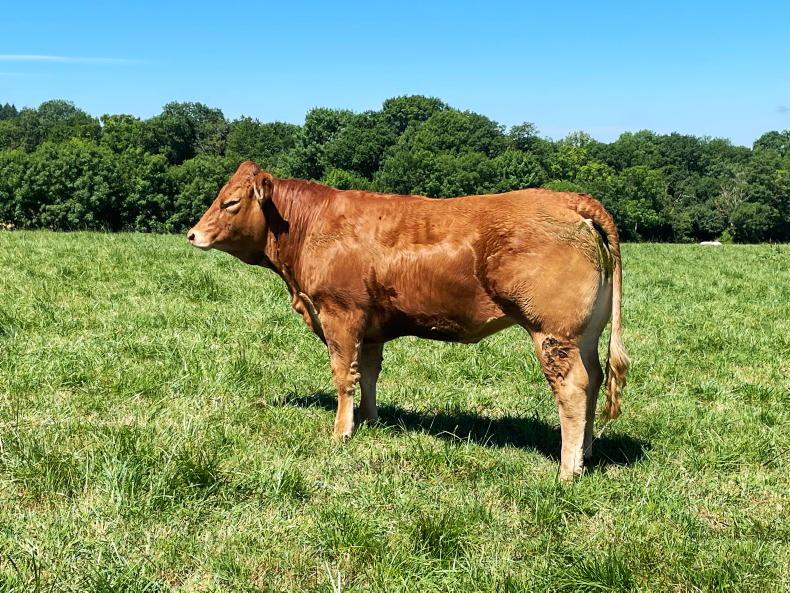
A September 2020-born daughter of Neuf with Mas du Clo and Highlander breeding in the dam.
Weanling prices have also had a big lift, with weanlings destined for the Italian market trading at €3.60/kg, up from €2.80/kg in 2021.
Similar to Irish production systems, costs have also spiralled, with nitrogen fertiliser going from €350/t in 2021 to €900/t in 2022. Drought conditions in 2022 also meant reduced crop yields and increased costs due to supplementary feeding at grass during the hot summer months.
French suckler systems are different to Irish systems in that the majority of farms are run on a pedigree basis, selling the top animals for breeding purposes with the remainder being finished on-farm or exported to Spain or Italy.
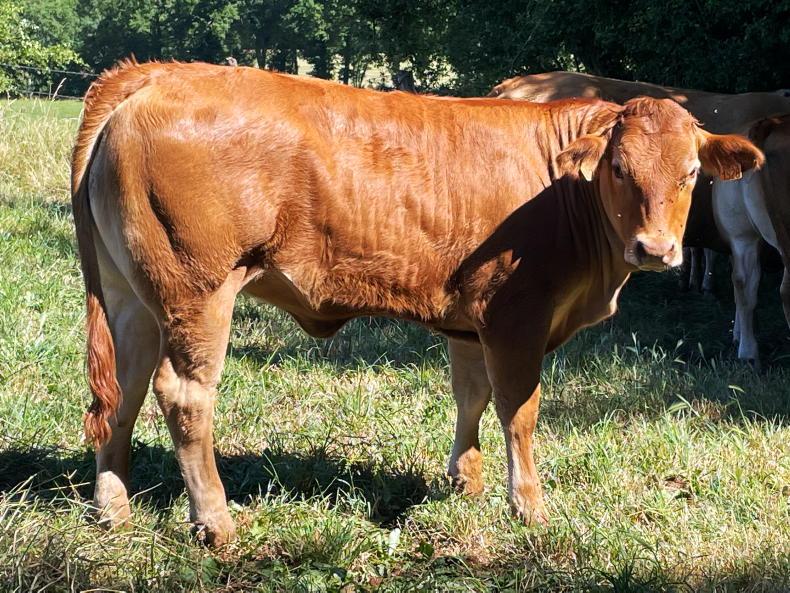
An August 2021-born heifer sired by Givay, going back to a Day-sired dam.
French suckler farms are typically a lot bigger than Irish farms, with an average herd size close to 70 cows. Often two families will work together on a large unit.
Farm visit
Brothers Daniel and Michel Thuery run a pedigree Limousin herd in the heart of the French suckler country, just east of the town of Rodez in the south of France. The farm stretches to 450ac and is typical of the land in the region, from rolling hills to higher terrain.
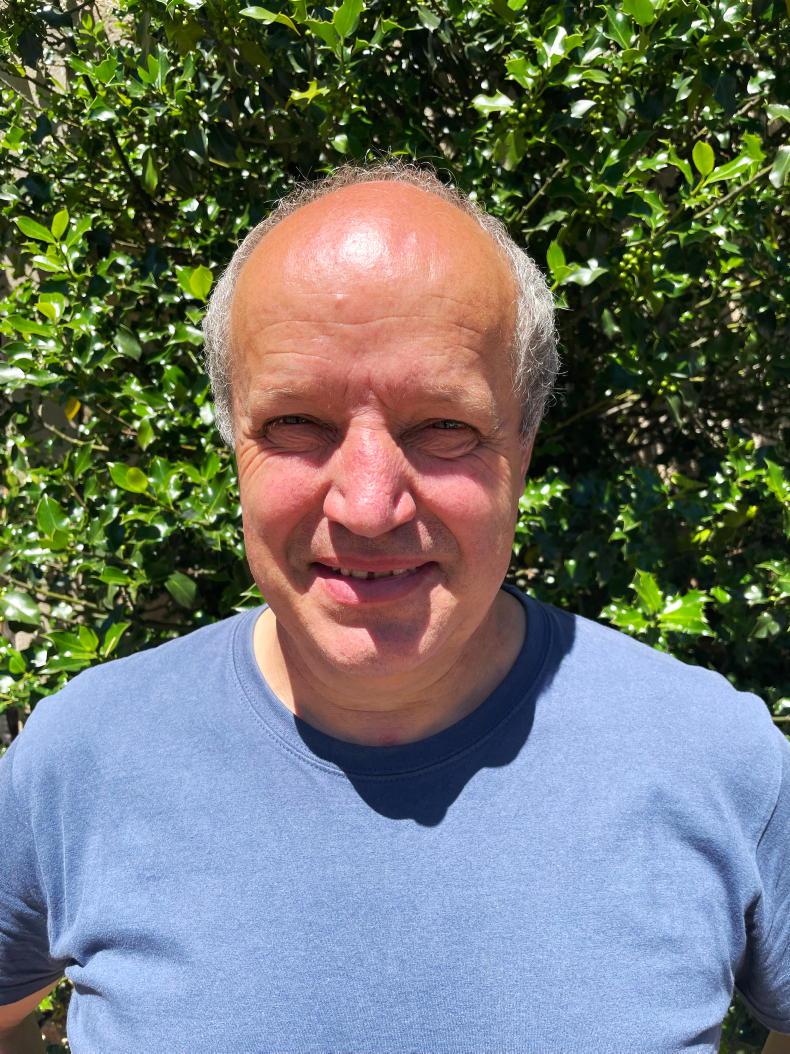
Daniel Thuery.
Turnout to grass typically takes place in April, with housing in November. The region gets high rainfall during the winter months, hence the similar housing period to Irish farms.
Calving takes place across three months from mid-August to mid-November. All heifers calve at two years of age. Because of the high rainfall, most pedigree herds in France calve during this period. The brothers like autumn calving, as it allows them to inseminate up to 80% of the cows to AI bulls of their choice.
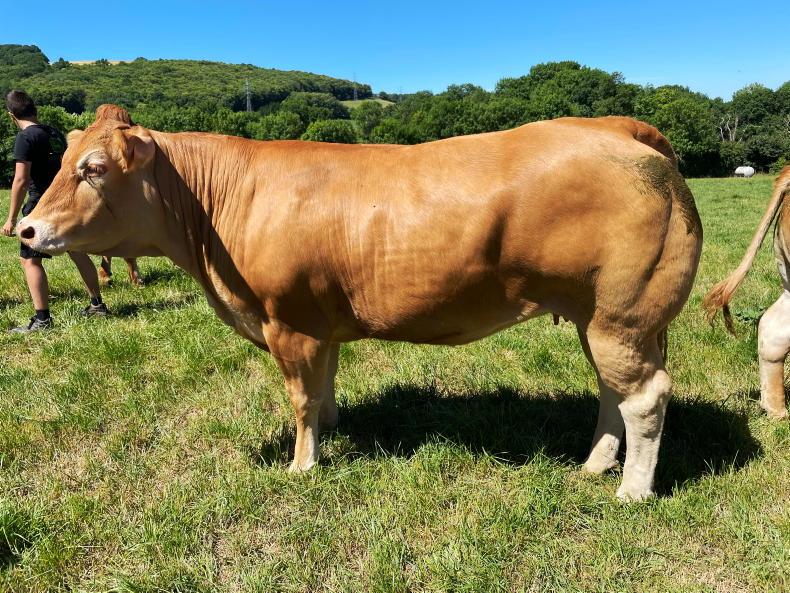
An August 2021-born daughter of Edakkya going back to a Usse-sired cow.
The brothers place a huge emphasis on maternal characteristics in their herd and AI bulls are picked on their maternal traits to breed the next generation of cows on the farm. Daniel said: “It’s all about the cow – you have to get the cow right. If you don’t get the cow right, you will go nowhere with your breeding. This doesn’t happen overnight and it can all go wrong in one generation if you get your choices wrong.”
They place a big emphasis on milk, fertility and calving ability. “It’s important not to mix up calving ease and calving ability. We need a square cow with a good pelvis that can calve easily. I’m not talking about very small calves, I’m talking about cows able to do their job,” Daniel added.
Mousours test station
Daniel and Michel work in close conjunction with Pierre Roy from the Moussours test station. At Moussours, a comprehensive maternal testing system run by a co-operative of French AI centres provides the backbone of maternal breeding values for French Limousin breeders.
The testing station was established some 40 years ago by the French breeding institute to performance test the best young bulls in the Limousin breed for growth and feed efficiency, with the best bulls of the year selected to participate in a progeny test to measure the bulls’ beef and maternal traits. It takes five years to maternally test the bulls, but at the end of this process, pedigree breeders can use the bulls with confidence.
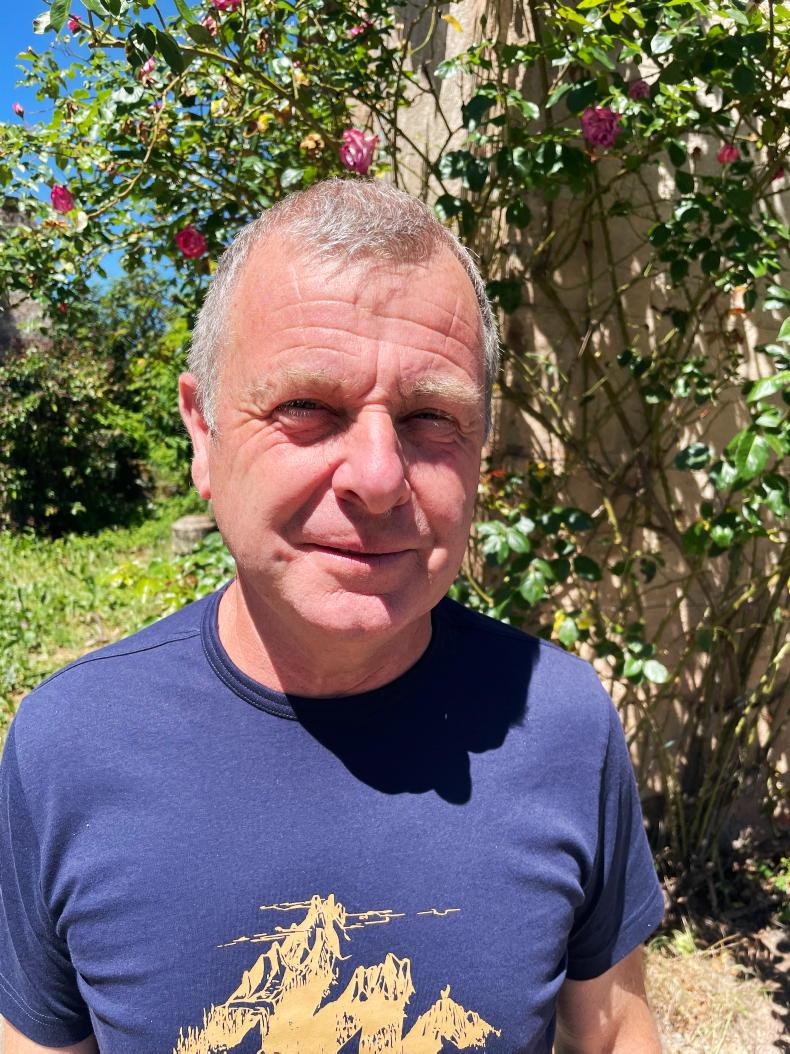
Pierre Roy, manager of the Moussours Limousin test station.
On this maternal progeny test, heifers are measured for fertility (targeted to calve at 24 months), number of ai straws per pregnancy and heifer age at breeding, calving ability (every heifer is observed during calving and given a score. Internal pelvic measurement is taken the day after calving).
Milk is also measured using regular weighing of the calves and once per month, the calf is separated from the mother for 12 hours and then let back to suckle – after suckling the calf is weighed, with the extra weight being the milk yield of the cow.
Docility is measured at every stage and any bull’s progeny that is not docile enough, regardless of other traits, is immediately eliminated from the test programme.
Walking through the herd, you can really see the breeding coming through, with mid-sized square cows weaning big calves at the end of the grazing season. Irish breeders would be familiar with many of the sires of these cows.
Irish connections
Two bulls that have made a big impact on the herd are On-Dit and Cameos, with a lot of cows in the herd going back to these bulls.
This year’s calves were equally as impressive, with many of the calves being sired by bulls like JT, Givay, Belorient, Loriental, Grenache and Jurancon.
Commenting on the genetics being used on the herd, Philip Crowe, who sits on the breed development committee of the Irish Limousin Cattle Society, said: “The Irish Limousin Cattle Society has been importing maternal bulls from France for a number of years, with Irish breeders having access to many of the bulls that French breeders have access to through companies like Crealim.
“It makes sense to use these bulls that have been tried and tested in France. It’s one of the areas where we need to work harder at getting the message across. The Limousin breed is number one when it comes to functional cows with milk, without compromising on calf quality, so it makes sense for us to focus on that,” he said.
Farm location: Rodez, France.Area: 182ha.Cow number: 200.Breed: Pedigree Limousin.System: Best bulls are sold for breeding with the remainder exported to Italy. Best heifers are retained for replacements with the remainder sold for breeding or exported.Current cow price: €5.60/kg.Current young bull price: €5.40/kg.
France is home to 4 million suckler cows, made up of 2 million Charolais, 1 million Limousin and another 1 million being made up of Blonde d’Aquitaine, Aubrac, Parthenaise and other breeds.
The French suckler industry is being met with the same challenges as the Irish suckler industry. Tight margins, a greater focus on the environment and issues attracting young people into the sector has meant suckler numbers have been in decline for the last number of years. However, 2022 has been a good year for prices. Beef price has been at €5.20-€5.60/kg for much of 2022, up from a price of €3.80/kg in 2021.

A September 2020-born daughter of Neuf with Mas du Clo and Highlander breeding in the dam.
Weanling prices have also had a big lift, with weanlings destined for the Italian market trading at €3.60/kg, up from €2.80/kg in 2021.
Similar to Irish production systems, costs have also spiralled, with nitrogen fertiliser going from €350/t in 2021 to €900/t in 2022. Drought conditions in 2022 also meant reduced crop yields and increased costs due to supplementary feeding at grass during the hot summer months.
French suckler systems are different to Irish systems in that the majority of farms are run on a pedigree basis, selling the top animals for breeding purposes with the remainder being finished on-farm or exported to Spain or Italy.

An August 2021-born heifer sired by Givay, going back to a Day-sired dam.
French suckler farms are typically a lot bigger than Irish farms, with an average herd size close to 70 cows. Often two families will work together on a large unit.
Farm visit
Brothers Daniel and Michel Thuery run a pedigree Limousin herd in the heart of the French suckler country, just east of the town of Rodez in the south of France. The farm stretches to 450ac and is typical of the land in the region, from rolling hills to higher terrain.

Daniel Thuery.
Turnout to grass typically takes place in April, with housing in November. The region gets high rainfall during the winter months, hence the similar housing period to Irish farms.
Calving takes place across three months from mid-August to mid-November. All heifers calve at two years of age. Because of the high rainfall, most pedigree herds in France calve during this period. The brothers like autumn calving, as it allows them to inseminate up to 80% of the cows to AI bulls of their choice.

An August 2021-born daughter of Edakkya going back to a Usse-sired cow.
The brothers place a huge emphasis on maternal characteristics in their herd and AI bulls are picked on their maternal traits to breed the next generation of cows on the farm. Daniel said: “It’s all about the cow – you have to get the cow right. If you don’t get the cow right, you will go nowhere with your breeding. This doesn’t happen overnight and it can all go wrong in one generation if you get your choices wrong.”
They place a big emphasis on milk, fertility and calving ability. “It’s important not to mix up calving ease and calving ability. We need a square cow with a good pelvis that can calve easily. I’m not talking about very small calves, I’m talking about cows able to do their job,” Daniel added.
Mousours test station
Daniel and Michel work in close conjunction with Pierre Roy from the Moussours test station. At Moussours, a comprehensive maternal testing system run by a co-operative of French AI centres provides the backbone of maternal breeding values for French Limousin breeders.
The testing station was established some 40 years ago by the French breeding institute to performance test the best young bulls in the Limousin breed for growth and feed efficiency, with the best bulls of the year selected to participate in a progeny test to measure the bulls’ beef and maternal traits. It takes five years to maternally test the bulls, but at the end of this process, pedigree breeders can use the bulls with confidence.

Pierre Roy, manager of the Moussours Limousin test station.
On this maternal progeny test, heifers are measured for fertility (targeted to calve at 24 months), number of ai straws per pregnancy and heifer age at breeding, calving ability (every heifer is observed during calving and given a score. Internal pelvic measurement is taken the day after calving).
Milk is also measured using regular weighing of the calves and once per month, the calf is separated from the mother for 12 hours and then let back to suckle – after suckling the calf is weighed, with the extra weight being the milk yield of the cow.
Docility is measured at every stage and any bull’s progeny that is not docile enough, regardless of other traits, is immediately eliminated from the test programme.
Walking through the herd, you can really see the breeding coming through, with mid-sized square cows weaning big calves at the end of the grazing season. Irish breeders would be familiar with many of the sires of these cows.
Irish connections
Two bulls that have made a big impact on the herd are On-Dit and Cameos, with a lot of cows in the herd going back to these bulls.
This year’s calves were equally as impressive, with many of the calves being sired by bulls like JT, Givay, Belorient, Loriental, Grenache and Jurancon.
Commenting on the genetics being used on the herd, Philip Crowe, who sits on the breed development committee of the Irish Limousin Cattle Society, said: “The Irish Limousin Cattle Society has been importing maternal bulls from France for a number of years, with Irish breeders having access to many of the bulls that French breeders have access to through companies like Crealim.
“It makes sense to use these bulls that have been tried and tested in France. It’s one of the areas where we need to work harder at getting the message across. The Limousin breed is number one when it comes to functional cows with milk, without compromising on calf quality, so it makes sense for us to focus on that,” he said.
Farm location: Rodez, France.Area: 182ha.Cow number: 200.Breed: Pedigree Limousin.System: Best bulls are sold for breeding with the remainder exported to Italy. Best heifers are retained for replacements with the remainder sold for breeding or exported.Current cow price: €5.60/kg.Current young bull price: €5.40/kg. 









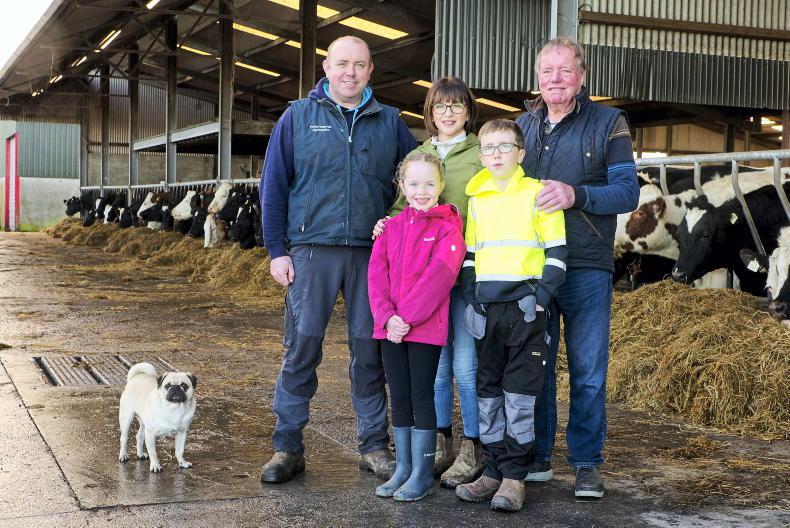


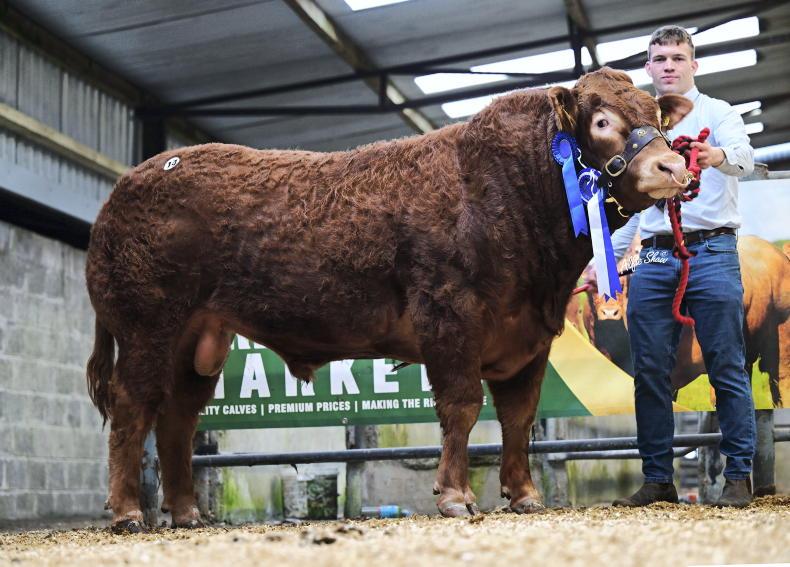
SHARING OPTIONS